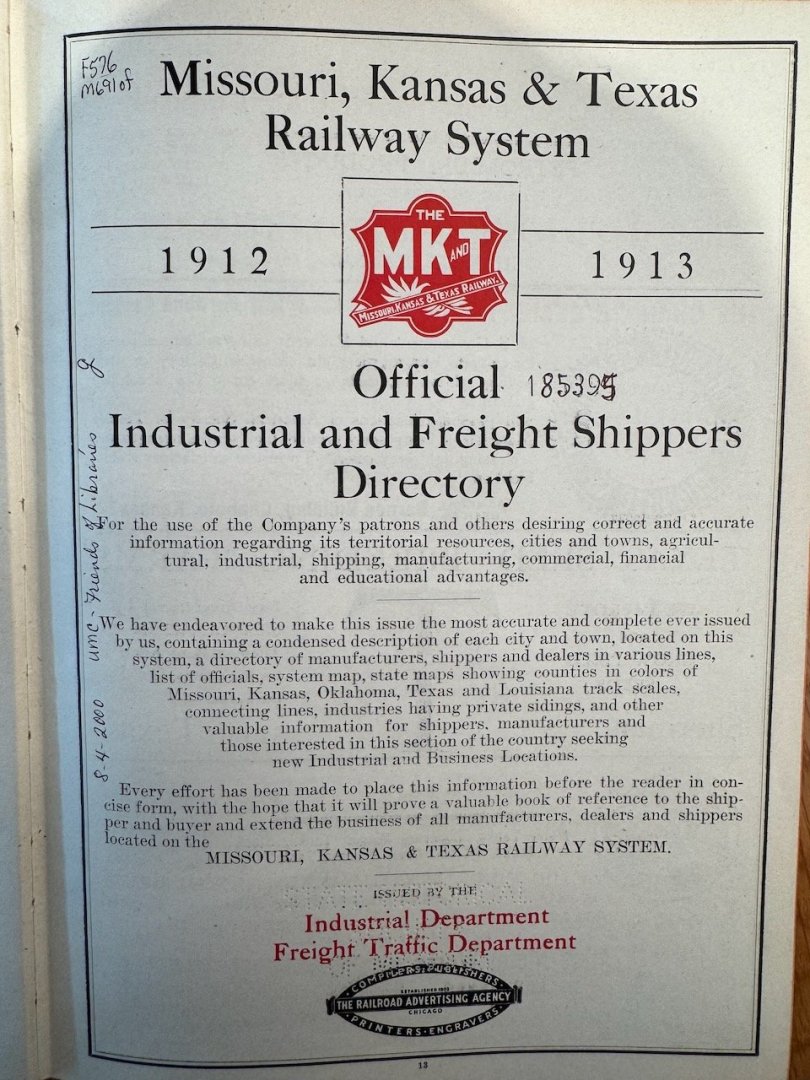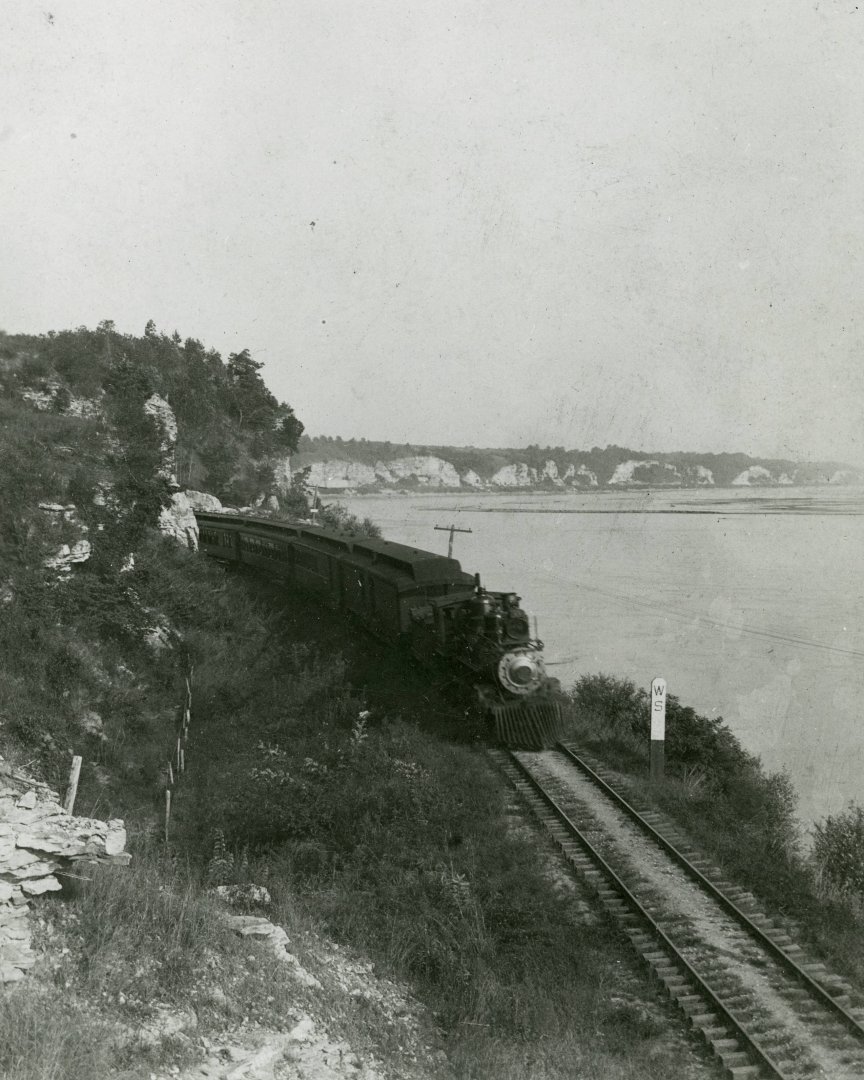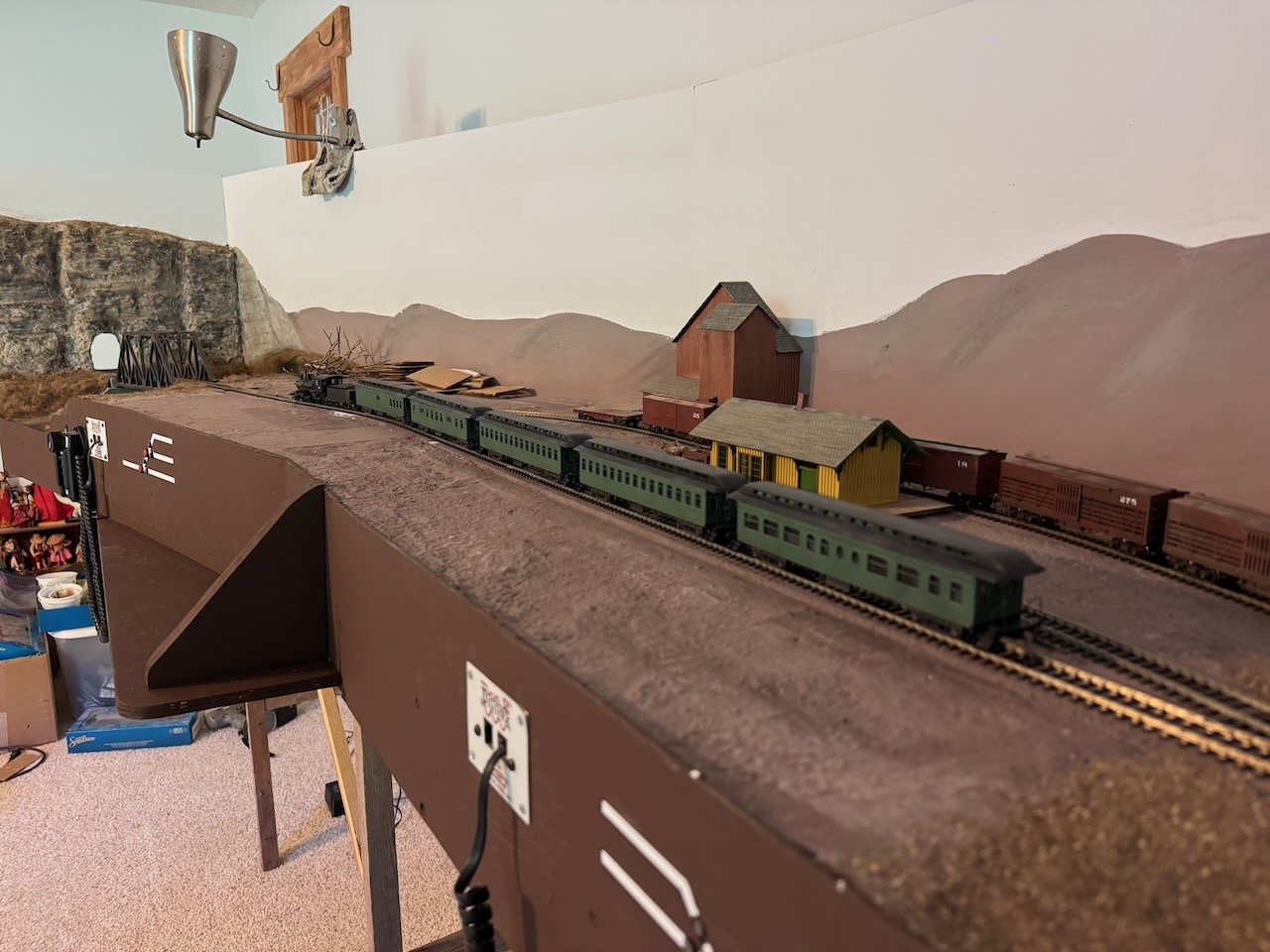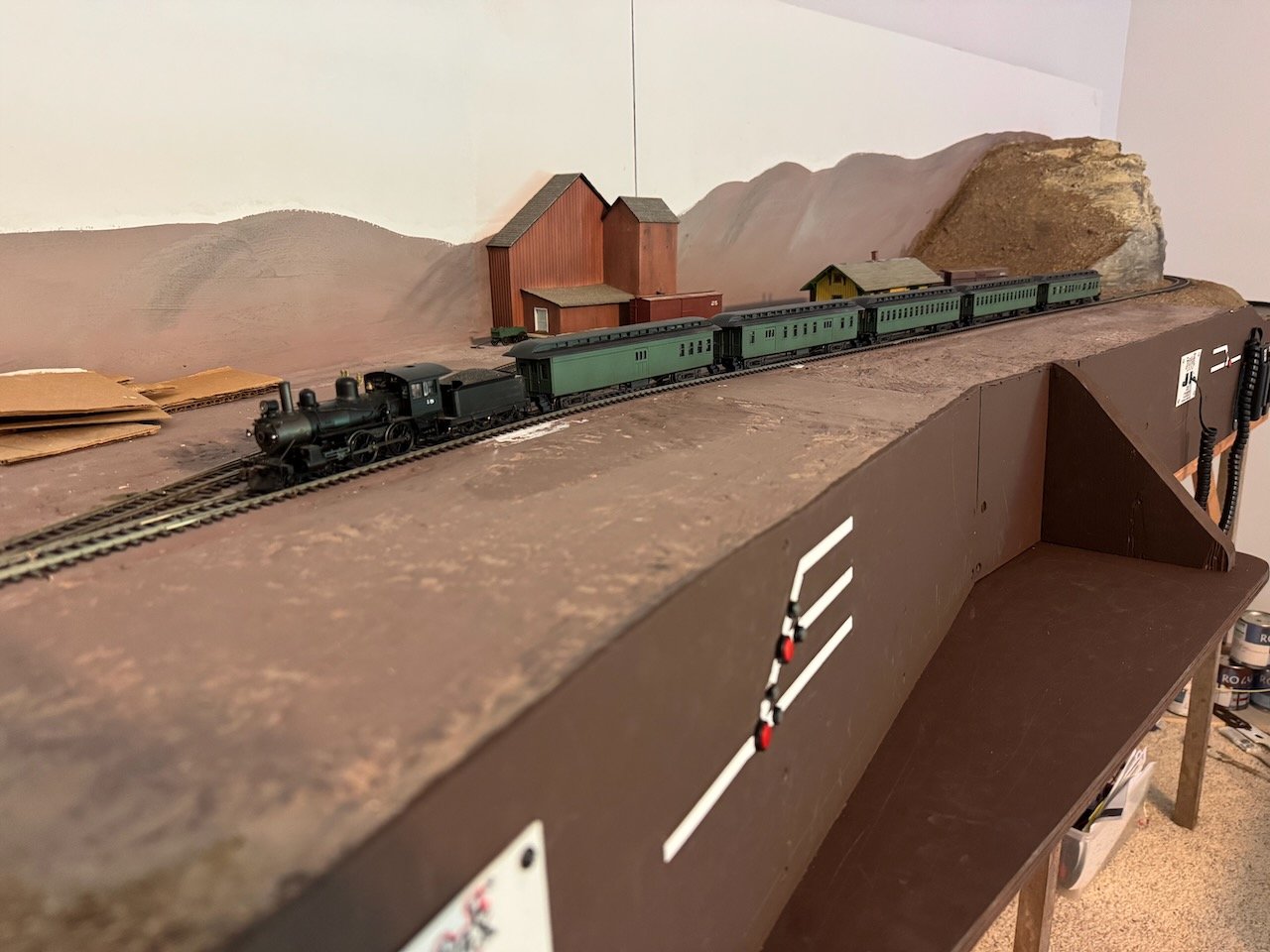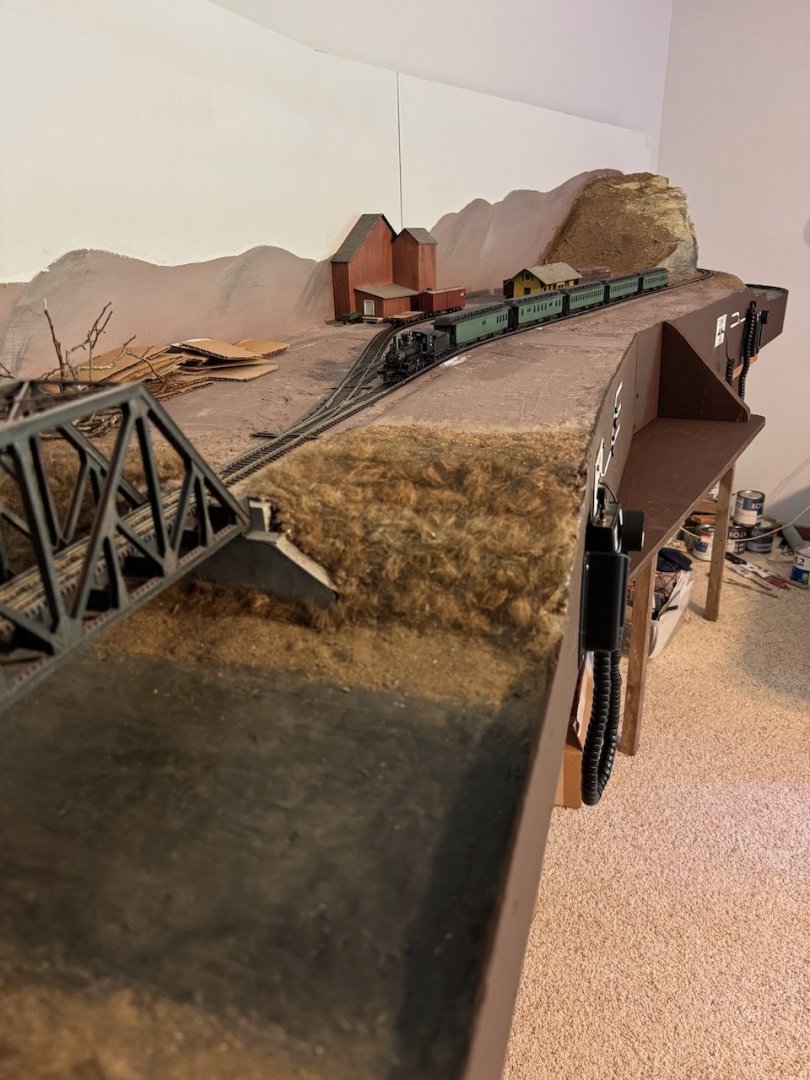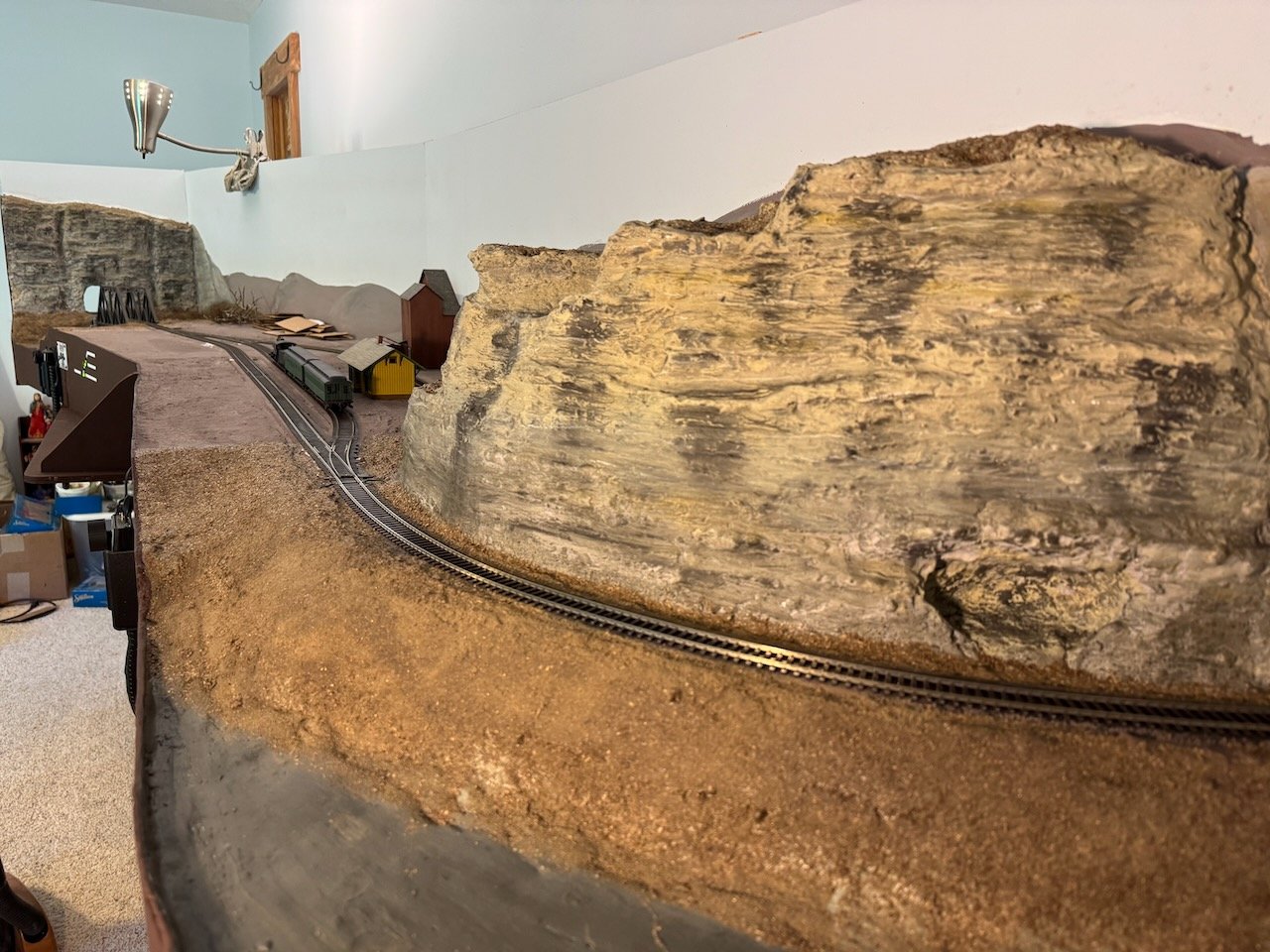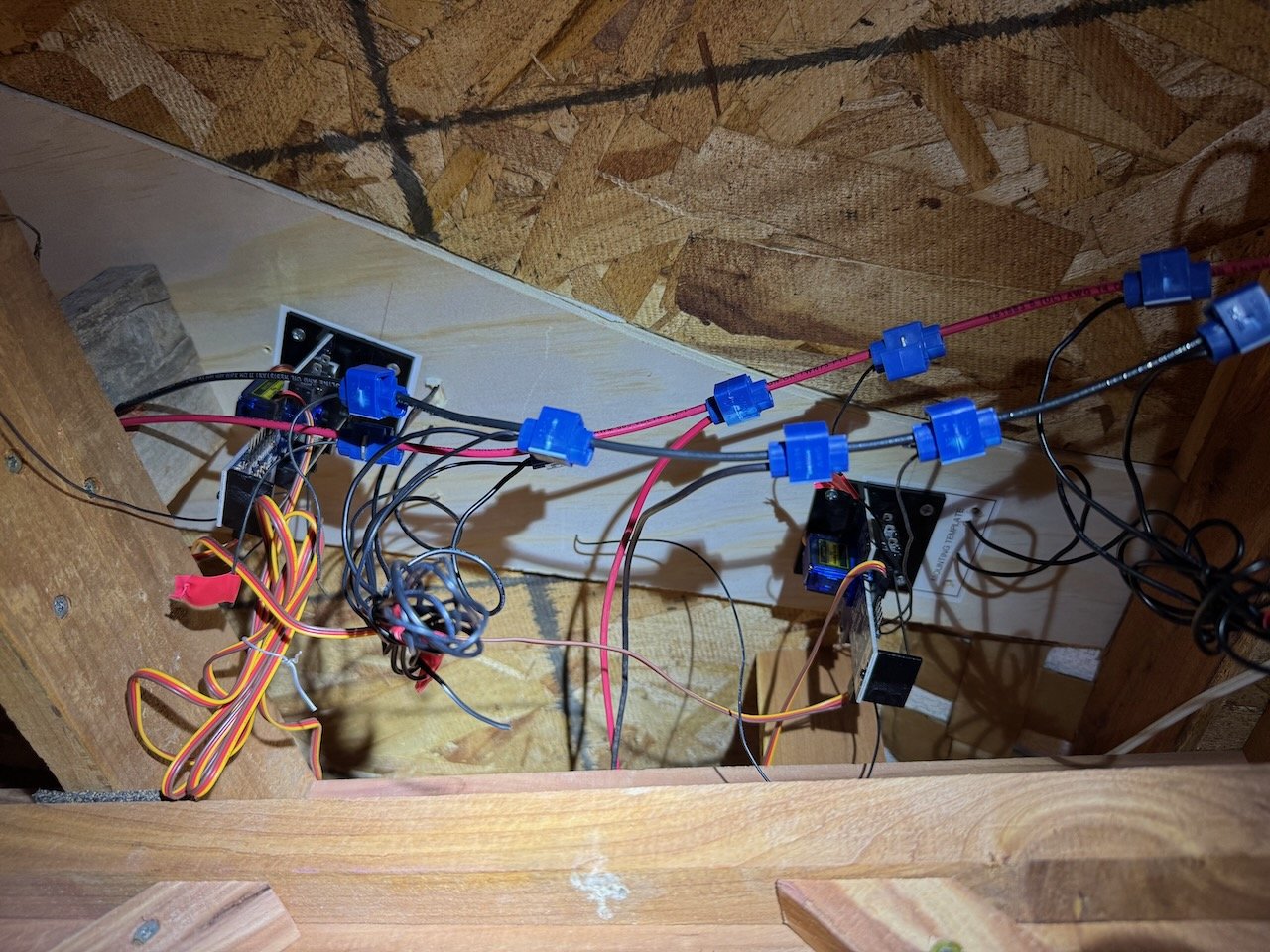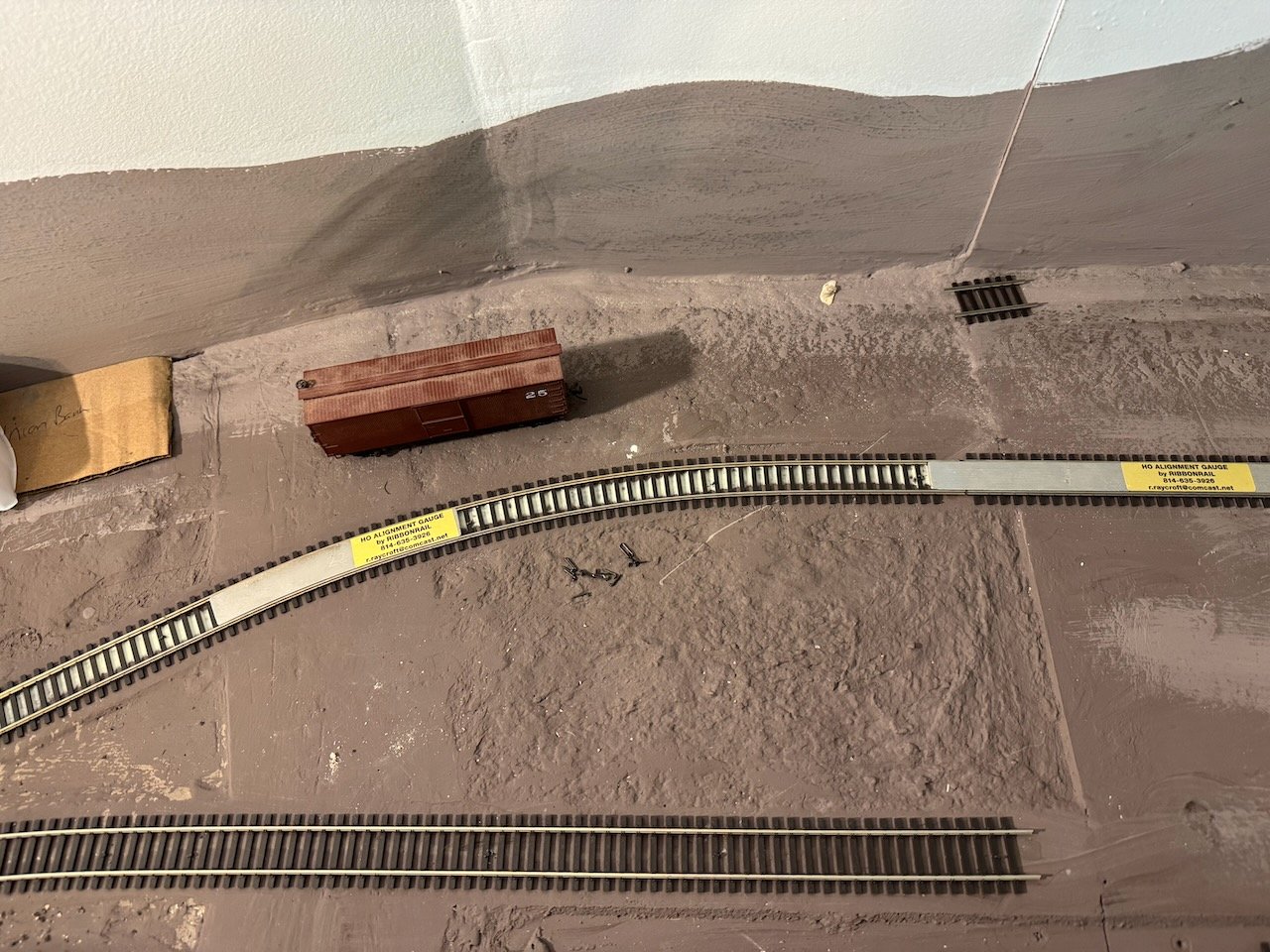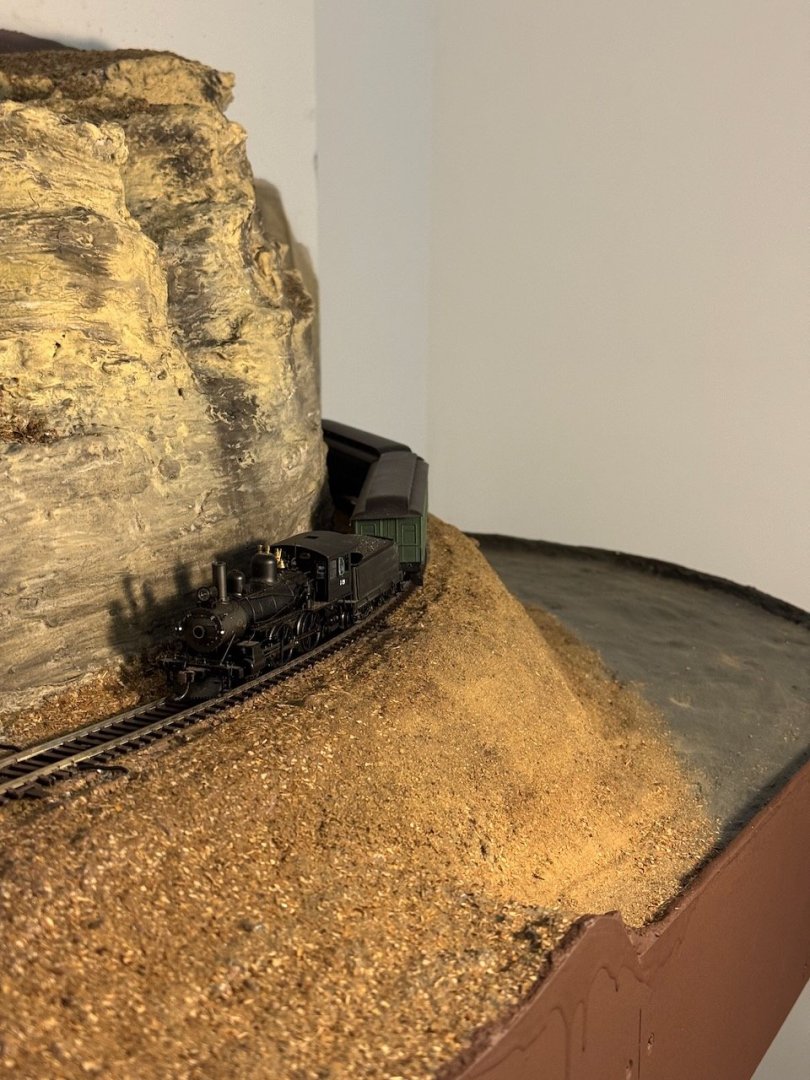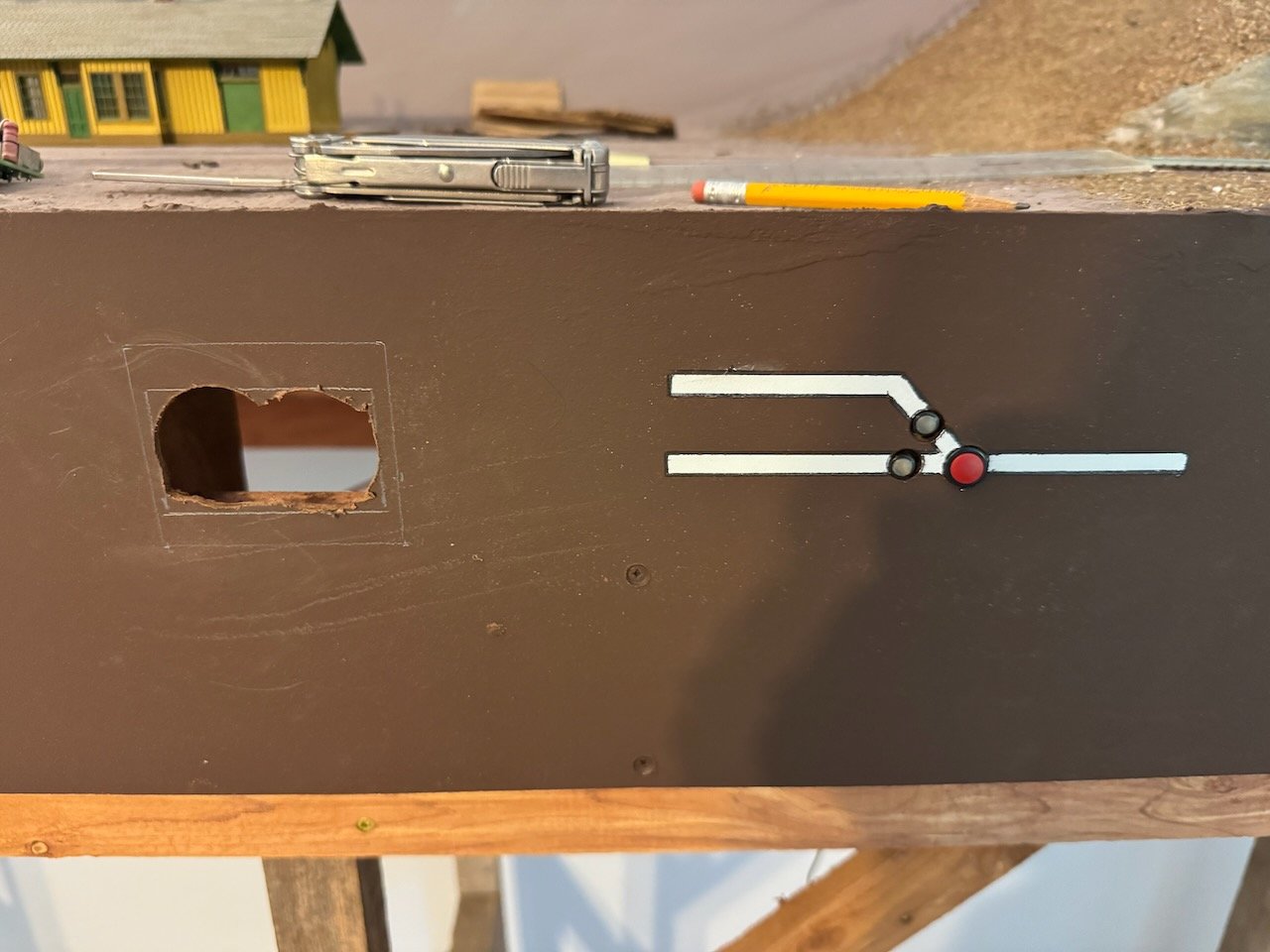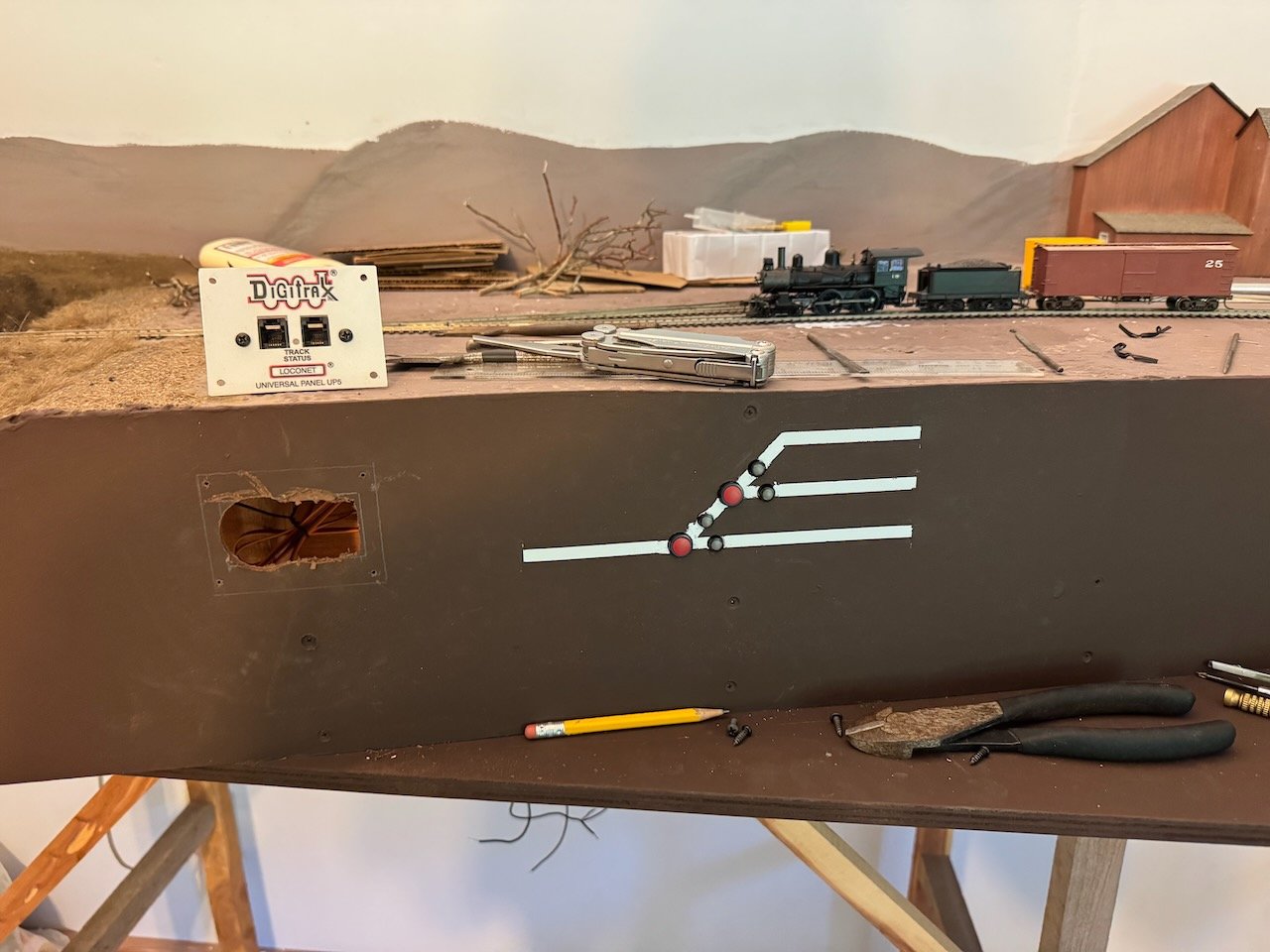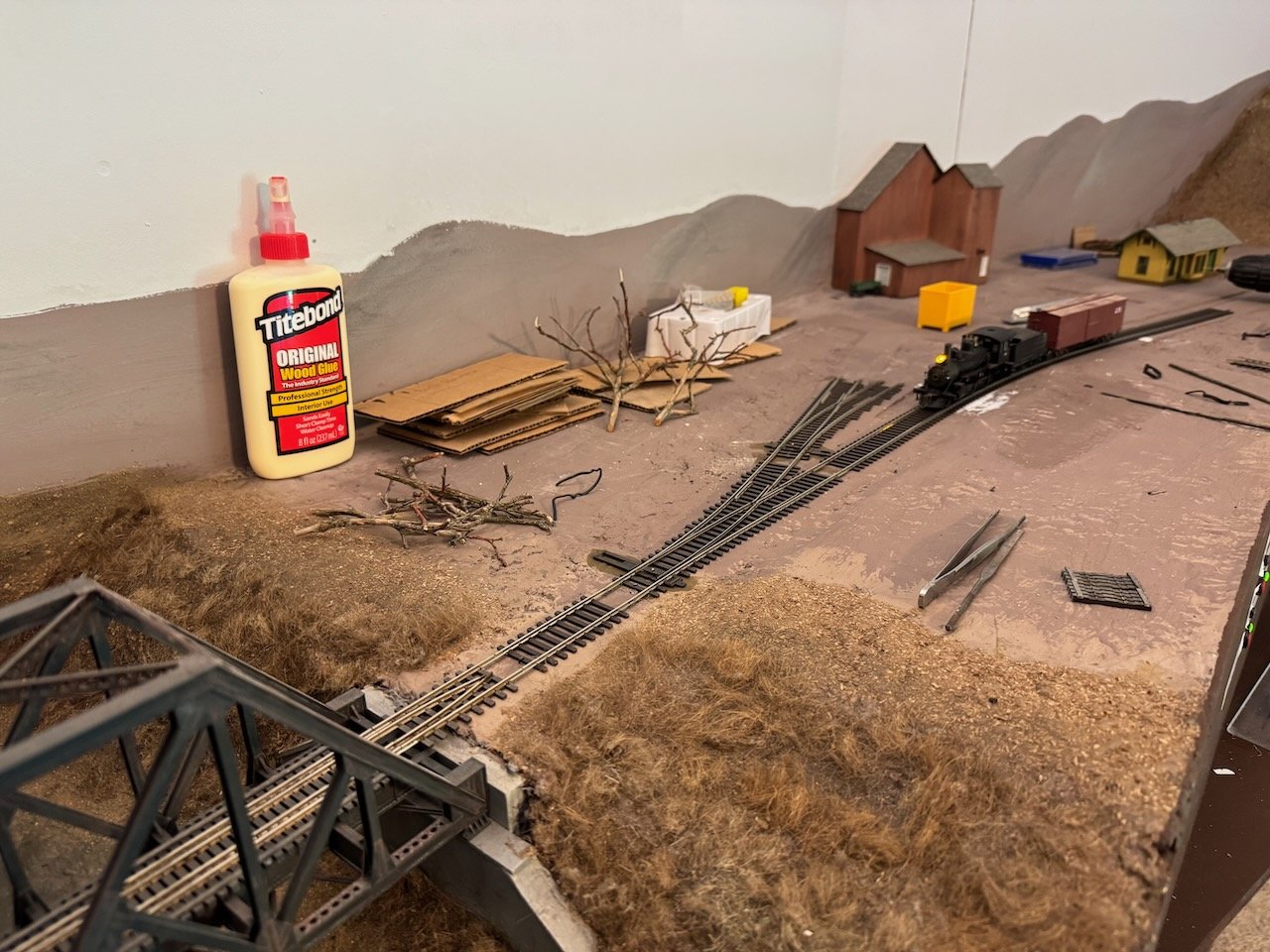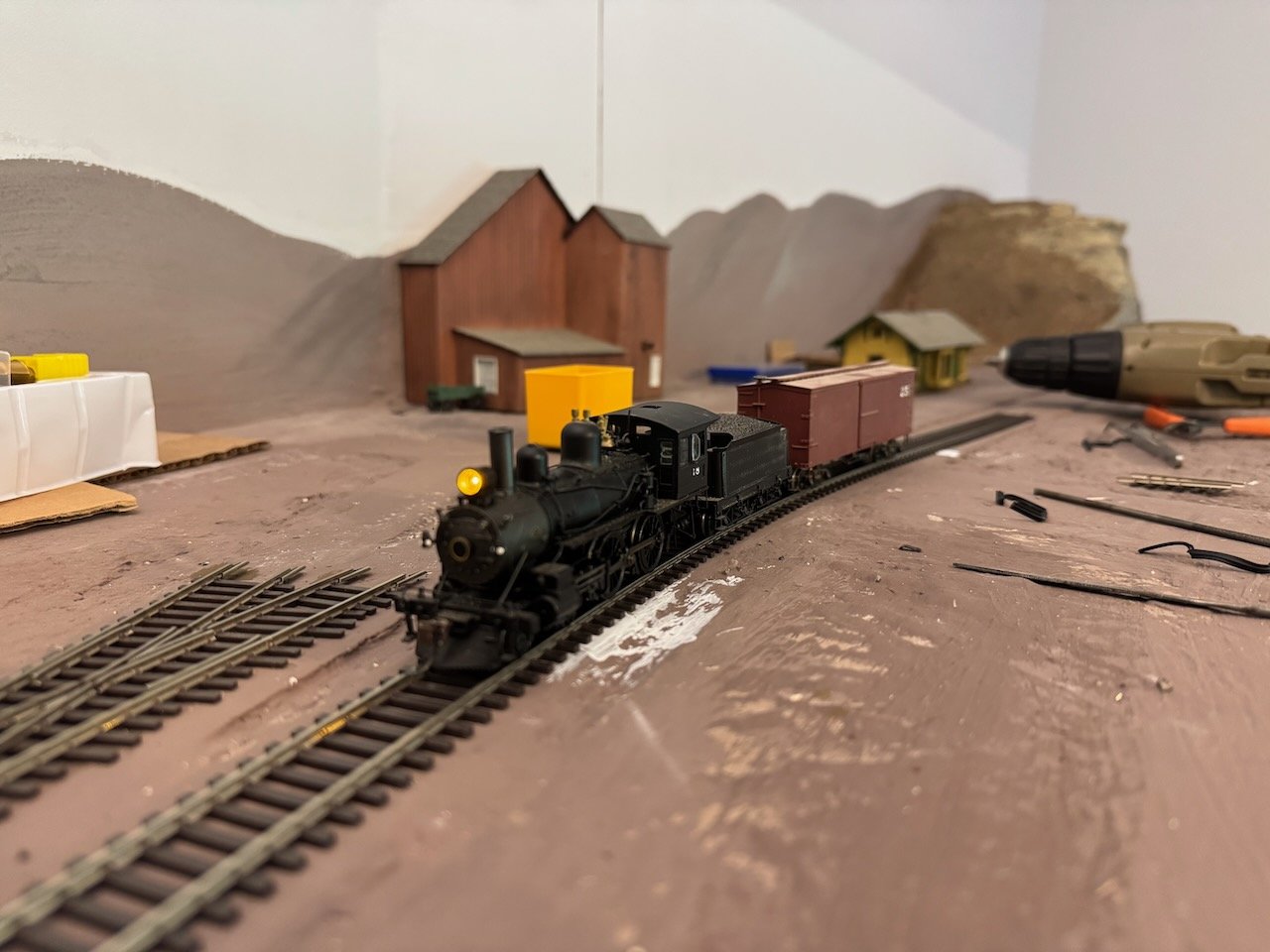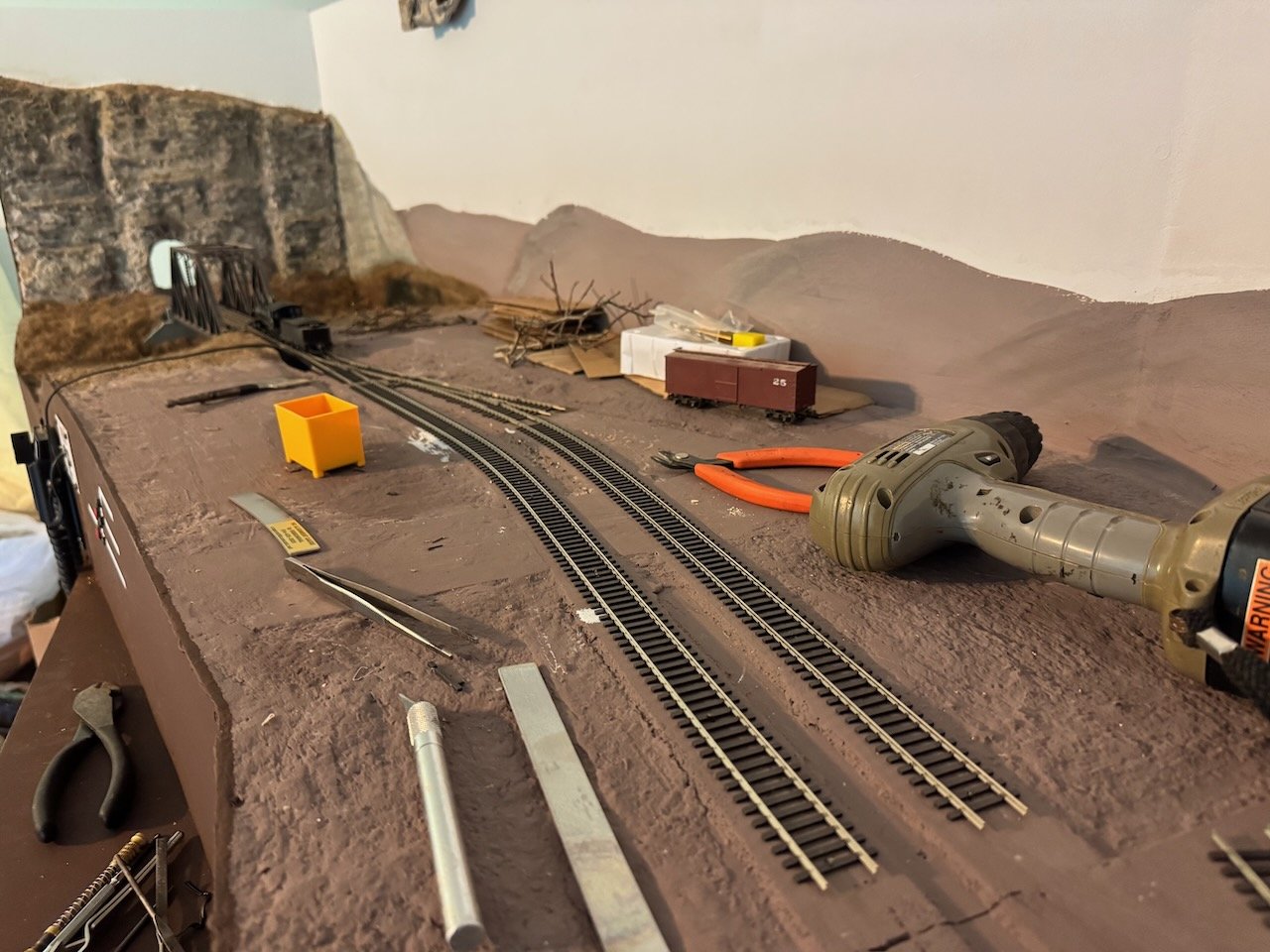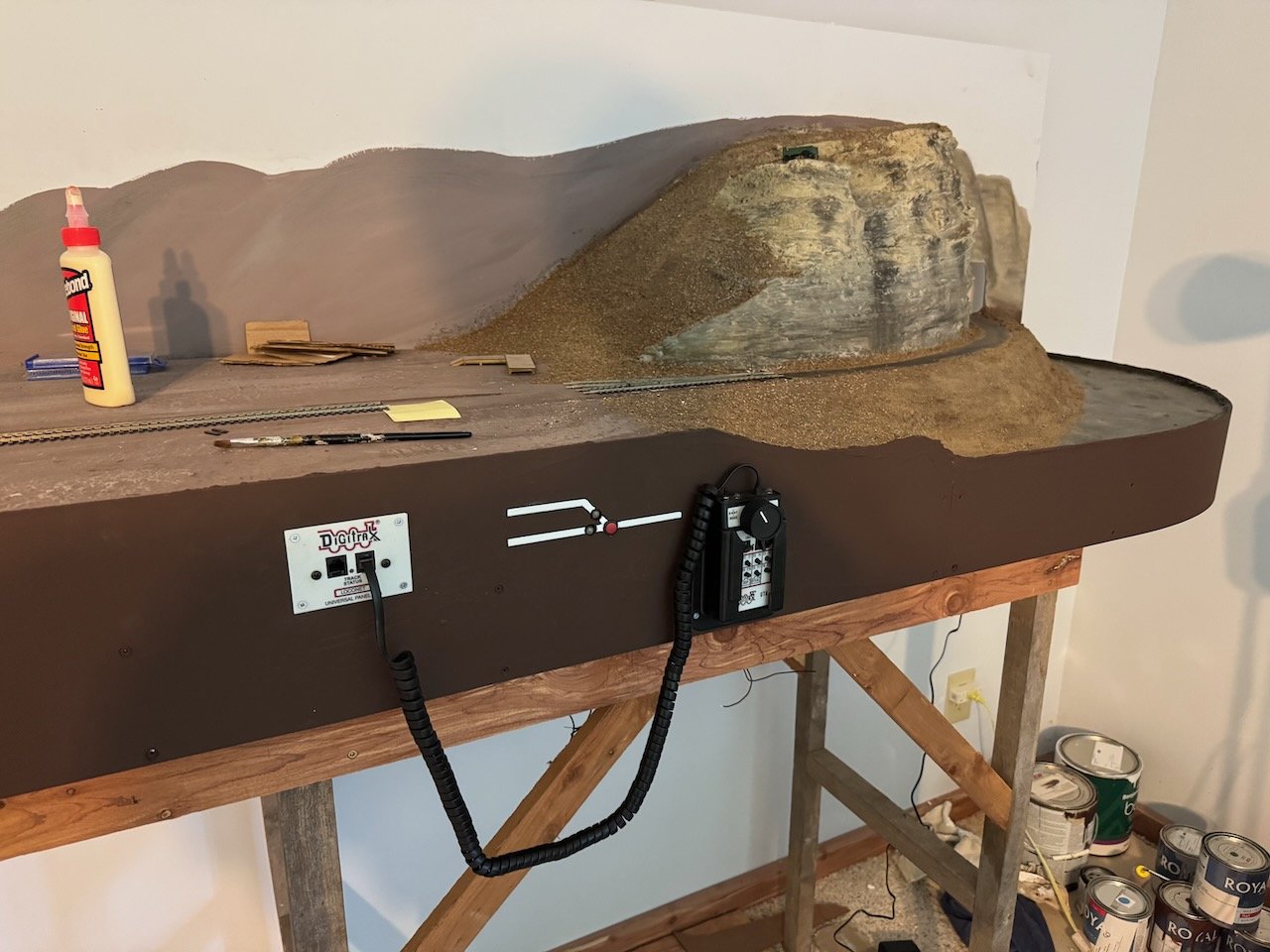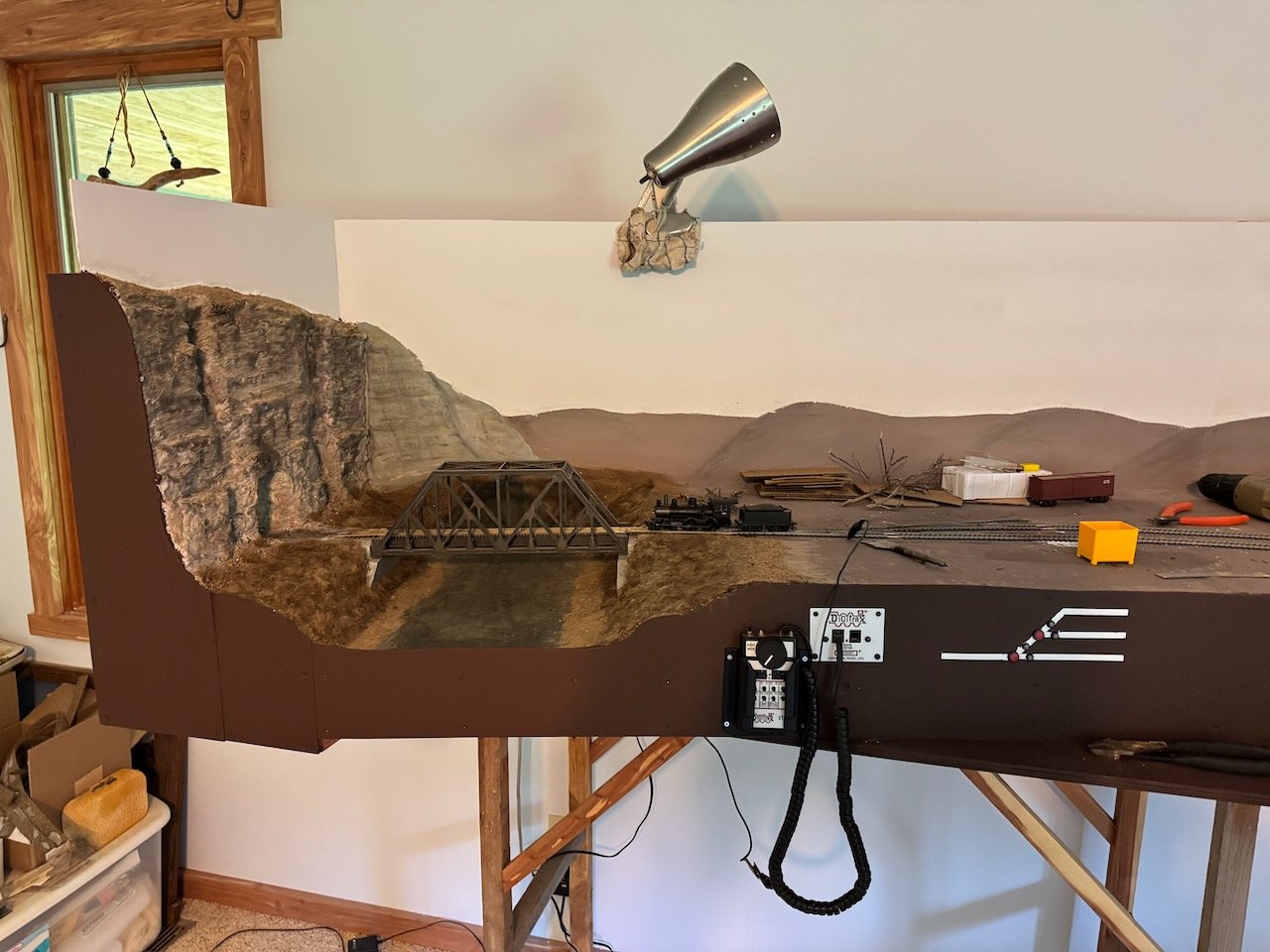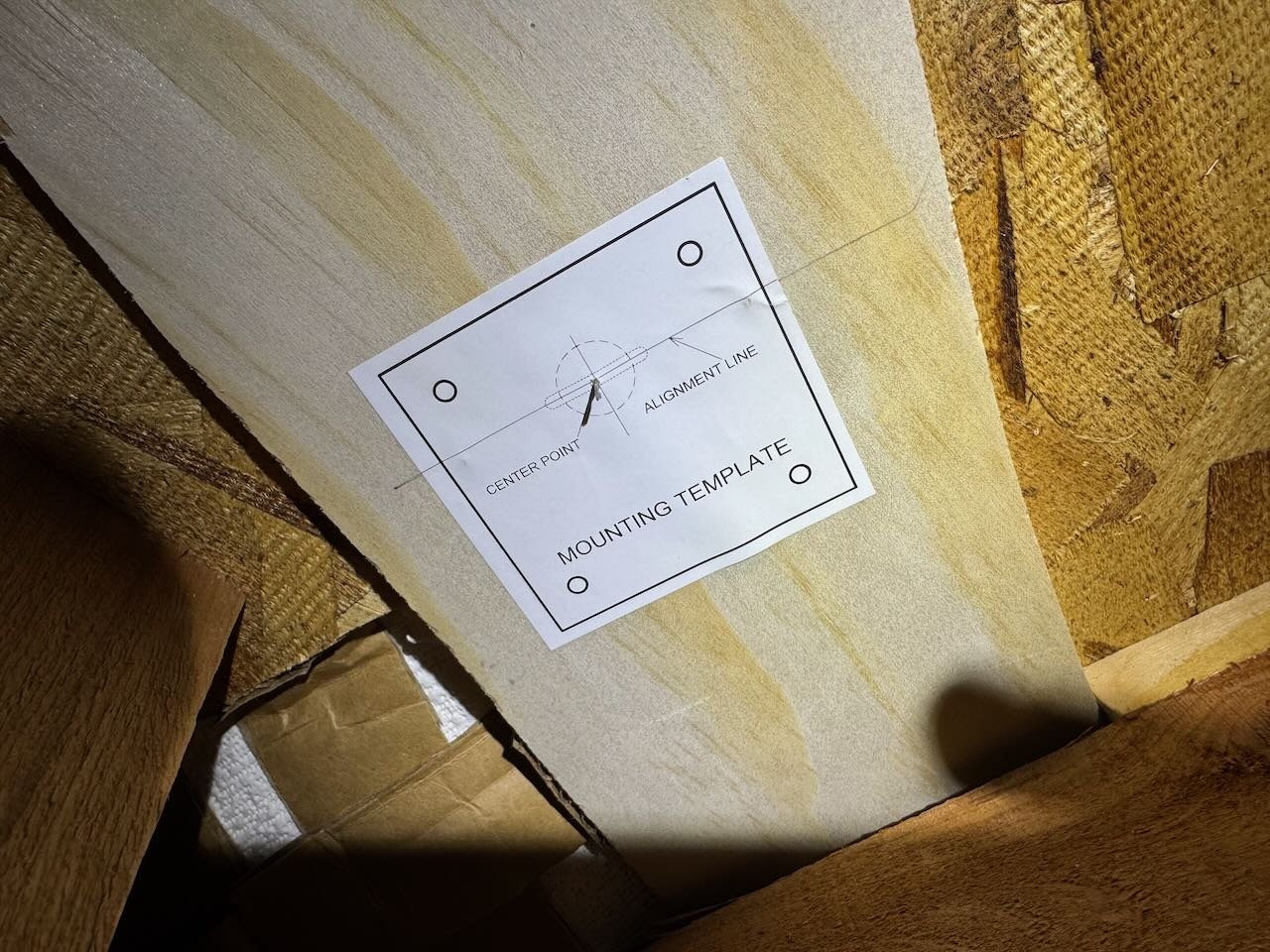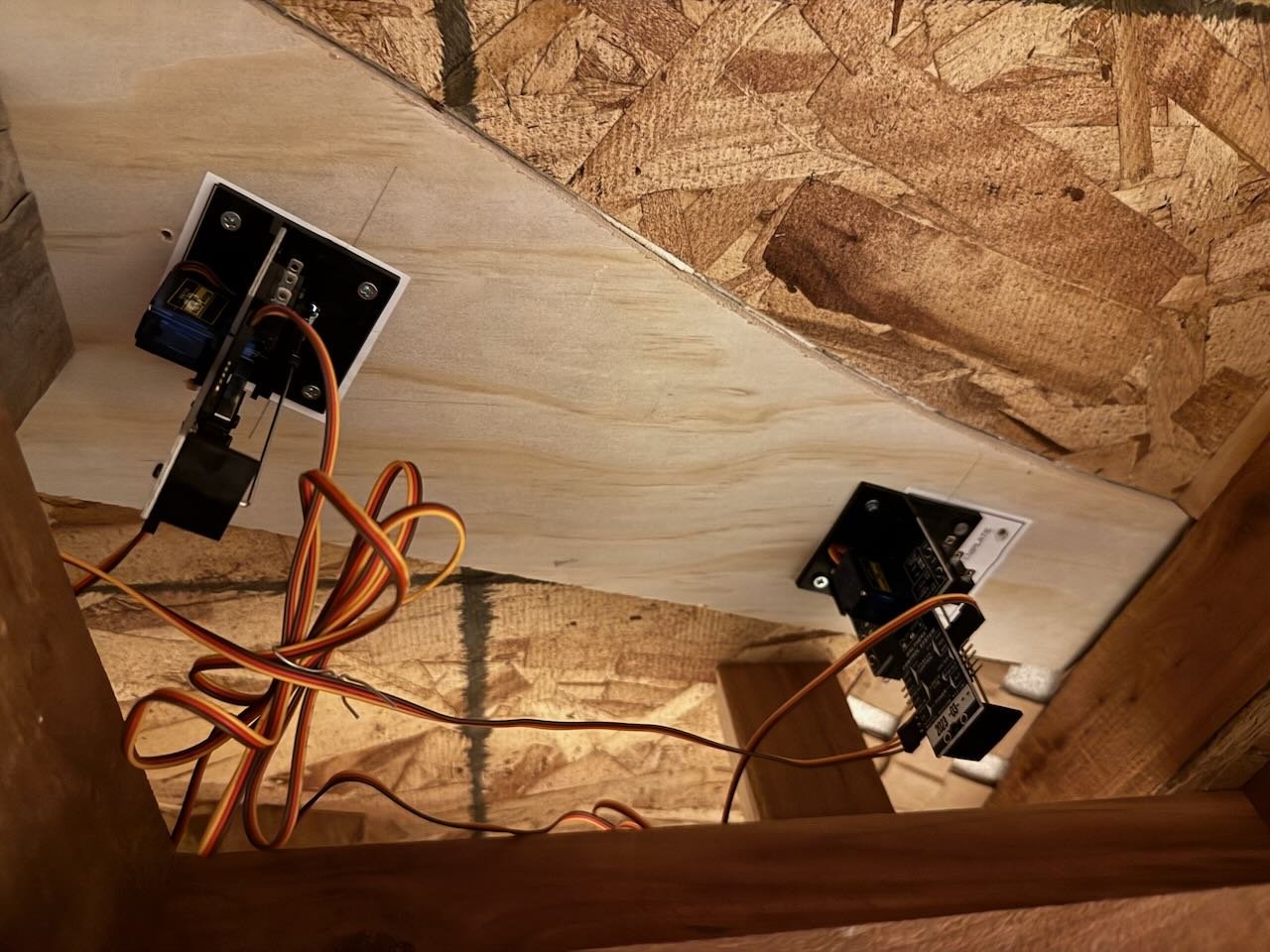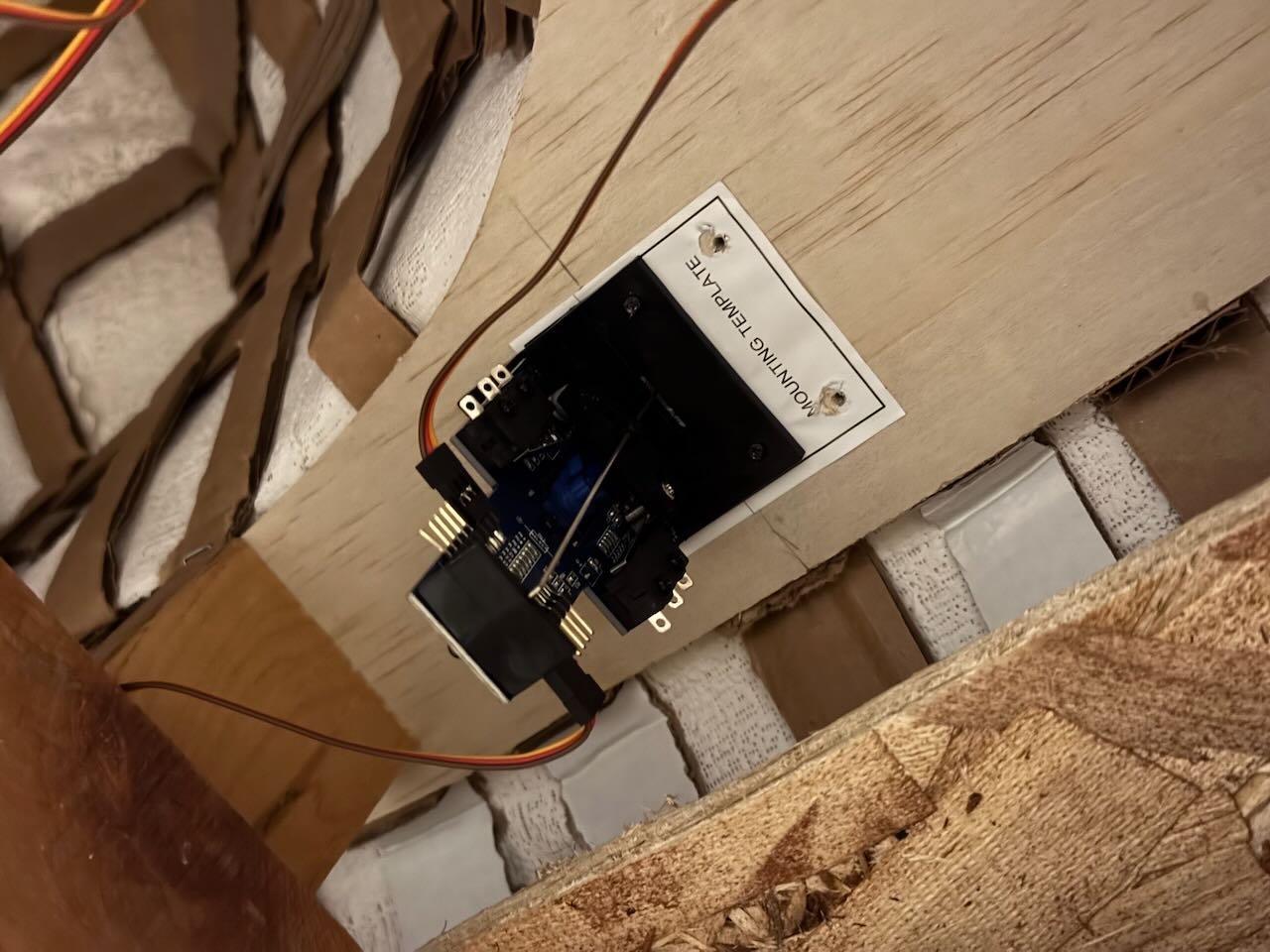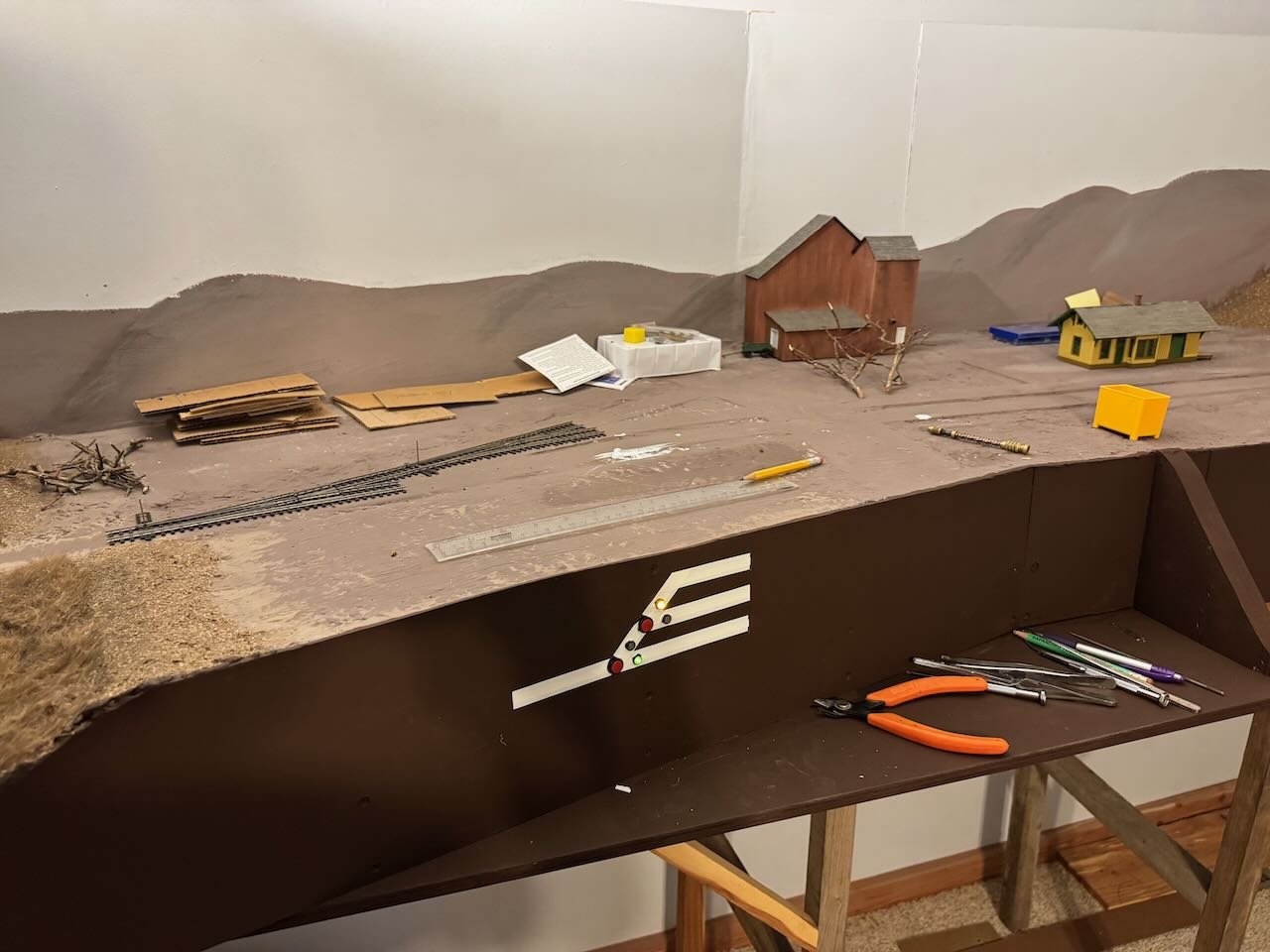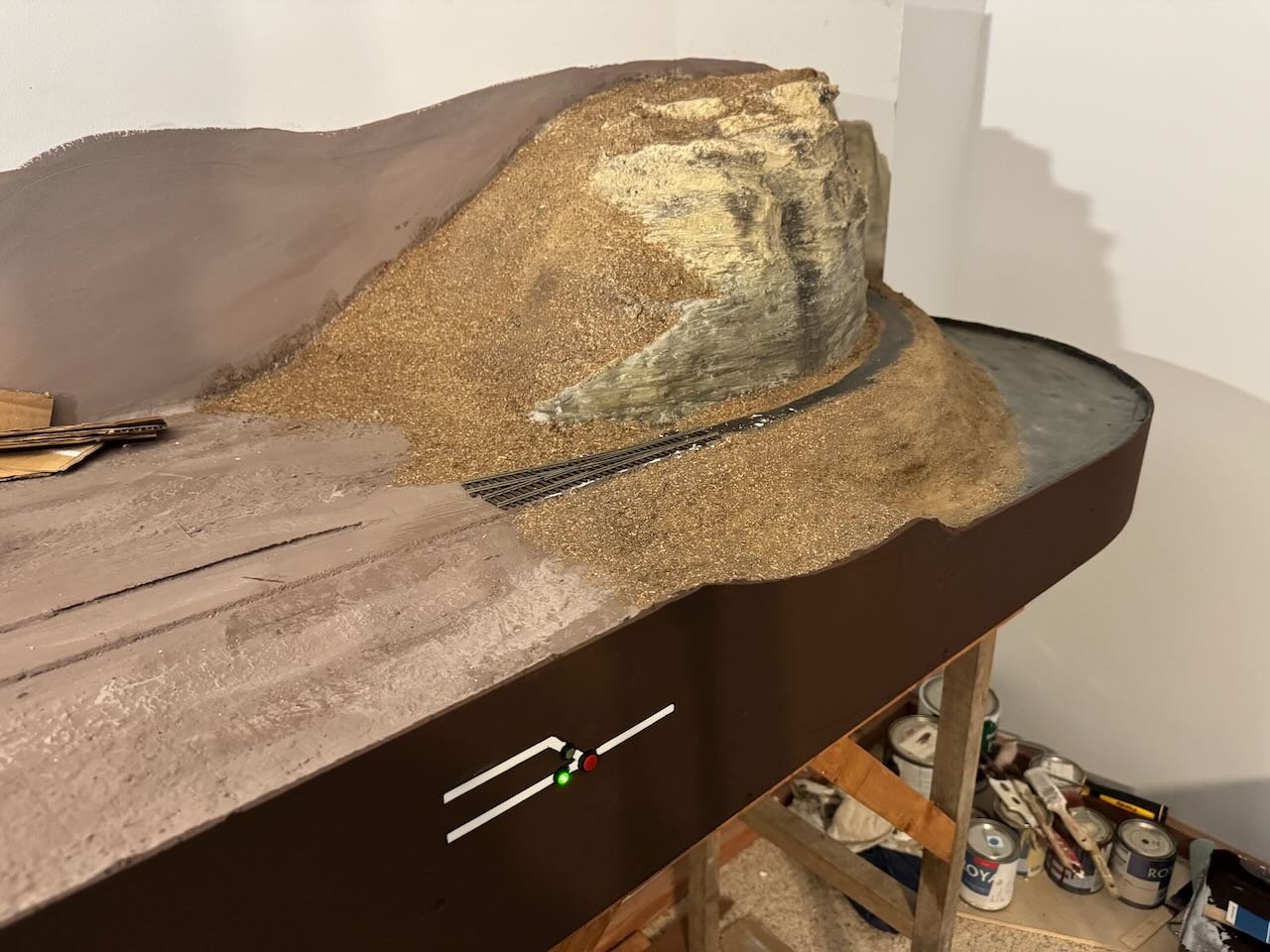-
Posts
3,353 -
Joined
-
Last visited
Content Type
Profiles
Forums
Gallery
Events
Everything posted by Cathead
-

Admitting some kits are now beyond me.
Cathead replied to bigcreekdad's topic in Wood ship model kits
Have you ever considered an admiralty-style hull-only model? They can look really nice as a piece of art and even have historical legitimacy. They also take up a lot less display space and aren't quite as dust-prone. For just one example: https://modelexpo-online.com/Model-Shipways-USF-CONFEDERACY-1778-164-SCALE-Admiralty-Style_p_997.html?srsltid=AfmBOooJZyiZQFadAsRn6gcMjJkEM6TtIVJpSCYM1xFq0W_FYXFCvg9q -

Admitting some kits are now beyond me.
Cathead replied to bigcreekdad's topic in Wood ship model kits
Come over to the riverboat dark side! Model Shipway's Chaperon is an underrated kit at a large scale (1:48) that takes a reasonable level of modeling skill but has very little rigging. It's also a rare example of a riverboat kit that's actually accurate. There are some nice build logs here and @kurtvd19 has a really nice practicum that gives you a lot of extra guidance and background. https://modelexpo-online.com/Model-Shipways-CHAPERON-Mississipi-Sternwheel-Steamer-148-_p_1001.html?srsltid=AfmBOoo40Nap01jT6diUyGH-8mSG8ItDwGgU6VF1-Xh1FR2w21W9mXXo -
Well sure, you'd think so, but the reason I got involved in this particular theme was that one of the earlier kit images you showed had what sure looked like the wrong Cyrillic letter, or at the very least a really poor rendition of one, so I was just celebrating that the part you showed this time was right.
-
Here's a bit of fun historical background. I was finally able to make a trip to the State Historical Society research center, where they have all sorts of cool stuff. The item I was after, which I'd perused before but not taken detailed notes from, was this: This is a thick volume, published by the railroad, that lists summaries of every town along its entire system covering Missouri, Kansas, Texas, Oklahoma, and Louisiana. These summaries include population, primary industries, descriptions of the surrounding country and its agriculture, and so on. The volume then goes on to list, in exhaustive detail, every business or businessman having a relationship with the railroad in an extraordinary variety of classifications. For example: That last one cracks me up. Language is always changing. So I was able to slowly go through the entire volume and note down every business that dealt with the railroad in my focus towns like New Franklin and Rocheport. Here's a summary of the businesses operating in Rocheport in 1912 that the railroad felt were worth listing in its business directory as shippers or receivers, curated for the entries I felt were most relevant. Yes, I'm focusing on 1900 instead, but this is the only year the research library has and it's close enough for my purposes. Hotels Grossman Hotel Agricultural implement, vehicle and wagon manufacturers and dealers W.W. Scobbee Apple and potato dealers, buyers, shippers, and growers George Roberts, apple grower & shipper C.D. Hill, " C.C. Bell, " H.J. Fieschman, " Luther Grigsby, " Sid Challies, " L. Torbitt, " C.S. Jenkins, " Coal & wood dealers T.J. Canole Drug dealers B.F. Dimitt E.H. Chinn General merchandise dealers E. Inman J.B. Challis H.R. Harris Grain Elevators, flour, feed, corn, grist and rice mills Rocheport Roller Mills, flour, 125 bbls daily Rocheport Elevator, 10,000 bu Hardware and mill supplies F.E. Bysfield Hay and alfalfa dealers and shippers T.J. Canole Lumber F.E. Bysfield Stock yards and livestock dealers and shippers Basque & McMillan Rapp & Little D.C. Steckdaub Note some of the interesting overlaps: TJ Canole is both a wood/coal dealer AND a hay/alfalfa dealer. This is pretty fun, since when I was first trying to figure out what that giant hay barn was, I thought it might be a lumber yard. It may still double as a fuel dealer and that means I can spot cars of coal there (Missouri has several major coal mining regions that were quite active in this era, including a major field along the MK&T mainline in SW Missouri). Also noted that FE Bysfield is listed under both hardware and lumber; that's also a pretty sensible combination. The sheer amount of independent businesses in a town of 434 is fascinating. Not to mention the far more diverse agriculture. Nine independent growers and shippers of apples from a town that size! I knew this area was once vibrant with orchards but even so that's a vivid picture. I'm strongly resisting the urge to get political here with regards to the decline in small towns, manufacturing, and independent communities and the resulting socio-economic problems. So all this is very interesting if you're a complete local history nerd, but why is it relevant to this modeling project? Two primary reasons. (1) It lets me use real names for local businesses. I can now call it the Rocheport Elevator (creative name, I know) and put a sign for TJ Canole, hay dealer, on the larger barn wall. I can give the commercial buildings in town the names of real enterprises. It adds a layer of realism and context that I think is pretty neat. (2) It makes operating sessions more interesting. Having all these names for local shippers lets me set up specific orders for cars. For example, maybe one set of stock cars sent to the stockyard is for a consignment being shipped by Basque & McMillan to one destination, while another set of cars is for Rapp & Little being sent to a different destination (for example, Kansas City vs St Louis, both of which had major meatpacking establishments), instead of just "two stock cars". I can have different boxcars spotted to be loaded with apples from different farms being sent to different destinations. I can have shipments for a given merchandise or implement dealer set out, rather than just "spot boxcar 123 on track 1 loaded with general freight". Operators switching in Rocheport (or anywhere else) will have a much richer sense of what the railroad is doing there, and that's part of the joy of modeling railroading, the ability to really recreate the actions (not just the look) of a setting. Another aspect of (2) is the value of planning a model railroad based on real settings. I laid out my version of Rocheport based on the actual track arrangements and what I could see in contemporary photographs. For example, there's only one siding and only two physical destinations for freight cars on that siding (the stockyards and the hay/grain complex). Model railroaders building something more freelanced would want more physical industries in a scene this size, and would be adding factories and other sidings and so on. I stuck with what I could see. And the reward is the evidence that Rocheport DID have a lot of other industries going, it's just that most of them didn't have specific loading points. I left room in my track plan for two spots where freight cars can be spotted for general loading/unloading (called "team tracks", since traditionally a wagon drawn by a horse team would pull up there, and still called that today even when served by modern trucks). I didn't have a specific plan for what would ship to/from these points, I just felt certain they'd be needed. And now I have a massive list of specific businesses that would be using those team track points, from outbound apple shipments to inbound farm equipment. It just makes the whole setting so much more vibrant. In a future post I'll talk more about model railroad operations but this is enough writing for one post. I think it's some pretty cool context and maybe you will, too.
-
Chris, here's another question about accuracy, as a former student of Russian. In the "what it's supposed to look like" photo, the stern has what's obviously supposed to be the ship's name in Russian, Phoenix (феникс). But that first letter looks totally off; it looks like a plain "o", not the Cyrillic "f", "ф", which can be scribed various ways but must have a vertical line through it. Sometimes it looks like a sideways 8, sometimes a circle, but always the vertical line. What they show would read as "oenix" in English. It really threw me until I realized it was an incomplete f. Unless I'm missing something about 18th century Russian script, which I admit to not being familiar with... What does the lettering look like in your kit?
-
I would have said the same as Other Keith; black makes a good undertone but the way to weather it is with shades of grey that tone down its ability to soak up light, and reveal some of the surface texture. Another reason I like pastels, because they inherently leave some texture on any surface that scatters light just a bit.
-
Me, too, though I kinda can't wait until the next revolution comes and locomotives become self-contained with battery power. I'd be thrilled to eliminate all track wiring. Sound does add an extraordinary level of immersive realism. Yeah, the car card boxes will be right at that shelf for easy use. This way this scene is designed, it's all but impossible (or at least highly inadvisable) for any paperwork to get put on the layout because the tracks are set back a bit with scenery in the foreground. There will also be a track diagram with spotting locations labeled, I'm working on developing that now. That'll be a future post.
-
I continued on track-laying and wiring for part of today. Here's what the wiring under the two west-end turnouts looks like. It's not as scary or chaotic as it seems, like wires are actually neatly bundled together and nothing's soldered, meaning it's easy to adjust if needed. Thick black and red wires are the bus wires that carry main track power, smaller wires branching off from them carry power to individual track feeders, and yellow/brown/orange wires are the control wires for the turnouts. This is by far the most complicated section because of the turnouts and the throttle panel. Here's a detail of track laying. I lay a thin smear of glue down on the roadbed, then use these nifty metal track spacers to set consistent curves or straight runs; these hold the flexible track in the right shape while I use a few small spikes to hold the track down until the glue dries. And the really cool news is that the track-laying and wiring are all done! After a small amount of trouble-shooting, everything appears to work smoothly and I can operate all across the layout. It's super-exciting. In celebration, here are some broader context shots with more trains staged for appearance. It's so cool to reach this stage. It'll be back to scenery for a while now, but I can actually run trains! I don't think we can upload video or audio clips directly to MSW, and I don't really want to start posting layout stuff to third-party sites like YouTube. So I'm not sure if I can do that. I do agree I'd love you all to see and hear the actual operation, it adds so much. I'll give this some thought, there may be a solution down the road. Thanks to all of you for helping me get to this point! EDIT: I forgot to add this image, which is a first rough take on recreating the historic photo that inspired this whole project. Pretty cool! The actual location of the real shot is actually west of the tunnel (layout left), so it'll appear if/when I extend this to the next module. The layout shot is actually along the bluffs in the background of the historic shot, just east (layout right) of Rocheport. But it's close enough!
-
Yesterday featured a landmark occurrence: the first movement of a train on this project: OK, fine, it was just a quick electrical test of the first bits of track laid. But it was still a very exciting moment! This locomotive is sound-equipped, and the huffing of exhaust along with a triumphant whistle blast brought Mrs. Cathead in to see what was going on. Here's a broader view: I really hate doing electrical work, it's easily my least favorite thing about model railroading. But it needs to be done so I'm doing it. I already showed the turnout controls; another step was to install the panels where locomotive throttles plug in. These involve drilling out rough holes in the fascia to accomodate the circuitry behind these panels, them screwing them in place. You'll also notice that the left-hand track diagram is now painted instead of taped, as agreed on by the community. I then installed throttle holsters as well. So now the front-facing part of the electrical work is done, and it's time to start doing all the fiddly under-layout wiring along with additional tracklaying. I've already found something I need to troubleshoot and hope I can figure out. Did I mention that I hate electrical work? But the good news is that it directly leads to some really fun stuff (operating trains). A few more status shots. It really is starting to look "official" with the fascia infrastructure near completion. And one final shot down the tracks:
-
My leaning was also the painted version, both for permanence and appearance (I think the thicker lines look a little child-like and overdone). As Rik said, harder to get right in the first place but worth it in the long run. And I could always paint wider stripes but I like the thin ones. I'm using the turnout control system made by Walthers. I've used the Caboose manual throws before but I'm not a big fan of their out-of-scale appearance and I just felt they weren't entirely reliable. Plus, the fascia controls give operators a better sense of how routes are lined, potentially avoiding mistakes. Especially on something with a through-running mainline as opposed to a switching layout where the manual controls make more sense. I should note that the backdrop still isn't done, I need to do some additional sky painting. But I do like how the background hills and bluffs came out.
-
Keith, is that image above the Millersburg ferry on the Susquehanna? It almost has to be, I can't imagine there being two places in the world with that unique a setup. If so, I rode that countless times growing up going back and forth between my home to the north and family to the south. It was an absolutely fascinating experience. That part of the river is something like a mile wide, bank to bank, but so shallow you could probably walk all the way across if the current wasn't too strong. You can actually look down and watch the river bottom going by. Never experienced anything else like it. I built a big Lego version of it as a kid, I was so fascinated by it. Now I wish I had a bunch of photos, but at the time I took it for granted!
-
Time for a change of pace. I'm at the point, scenery-wise, where I'm comfortable starting to lay track. I've done most of the really messy work and I'm itching to make things move. The first step involved some pre-tracklaying setup, specifically installing switch machines. I'm using automatic controls for the turnouts (what railroaders call what non-railroaders call switches). For the non-model-railroaders, these are basically electrical units that you install under the turnout. They have a metal rod that sticks up through the roadbed and moves the point rails back and forth. They can be controlled in various ways; I went with basic pushbuttons installed on the fascia that use color and position indicators to show which route the turnout is lined to follow. For the model railroaders, I'm using the Walthers system that is designed use plugs and sockets for all the wiring to eliminate sautering, because (a) I hate sautering and (b) I like the adjustability and reusability of the plug/socket system. The short version of installation is as follows: (a) place the turnout exactly where it's intended to be and spike it down temporarily, (b) drill some marker holes through the roadbed to translate that location to the lower surface, (c) install a template based on those reference holes to ensure the control unit below lines up with the machine above, (d) remove the turnout and drill a wider hole back up through that will allow the control arm to move, (e) install the machine with screws from below, (f) re-install the turnout above, (g) hook up the power and fascia control, (h) push the button over and over again, reveling in the feeling that live action is getting close! Here's a few photos: Aligning the template below; the wire at center is running through to the surface to mark the exact location: Machines installed: Sharp eyes will notice the offset templates on two of these. Despite several checks, I still managed to install two of three backward the first time. They work in either direction, but the control lights didn't line up with how I wanted them, so I just reversed the machines and everything lined up properly. And here's how the top side looks. You'll notice the nice lights indicating which way the turnout is set; green for whichever route is more dominant and orange for whichever is subsidiary. Pushing the red button for a given turnout flips its route. You'll also notice the track schematics controlled by these lights, and that they look different. I'm trialing two looks. The narrower lines are painted on, while the thicker lines are electrical tape. I have a personal preference but won't reveal it yet as I'm curious if anyone has perspectives I haven't thought of. Those with keen eyes and memories will also notice that I finally painted the entire fascia in its final shade of rich brown. This really ties the scene together and makes it look nicer. Here's an overview shot of how things stand; also another way to judge the two track schematic styles. Now that the turnout locations are set, I can start laying the rest of the track. There's more electrical work to do below, running bus lines from which individual track wires will run and so on, but it's really getting close now. Not actually sure when more progress will be made because I have an especially busy couple weeks coming up even by my standards, but it's nice to feel close to track happening. Let me know what you think!
-
Keith, I dunno, eyes can be funny and pre-conceived notions can be strong, but that other image still looks consistent with a skiff to me and I think the main deck structure is long enough to accommodate both that and whatever pipe that is toward the back. But I'm not trying to insist on it or tell you what to do; It's Your Model very much applies here! EDIT: Meant to add, I don't have an educated opinion on the drive train, if it's not a typical earlier-era setup it's beyond my knowledge.
-
Glen, What we might be seeing is the sternpost? Flattened to accept a rudder? That would explain the straight black bit that transitions into the curved lower part of the keel. As for lying "flat" and not at the angle of the slanted roof, it may well have support blocks that keep it "level". Why have a dinghy stored in such a way that it's predisposed to slide off a slanted roof? If you look close, you can even see where the upside-down gunwale hangs out over a shadow below that would fit as some kind of support block. It still looks strongly like a small boat to me.
-
My first reaction is that it's the bow of a small boat, turned upside down. That's right where it might be kept. The white triangle is the shape of the hull, and the pipe/wire is simply the minor keel and its extension up the bow. There's enough room next to the pilot house to keep a little skiff and every vessel like this would have one.
About us
Modelshipworld - Advancing Ship Modeling through Research
SSL Secured
Your security is important for us so this Website is SSL-Secured
NRG Mailing Address
Nautical Research Guild
237 South Lincoln Street
Westmont IL, 60559-1917
Model Ship World ® and the MSW logo are Registered Trademarks, and belong to the Nautical Research Guild (United States Patent and Trademark Office: No. 6,929,264 & No. 6,929,274, registered Dec. 20, 2022)
Helpful Links
About the NRG
If you enjoy building ship models that are historically accurate as well as beautiful, then The Nautical Research Guild (NRG) is just right for you.
The Guild is a non-profit educational organization whose mission is to “Advance Ship Modeling Through Research”. We provide support to our members in their efforts to raise the quality of their model ships.
The Nautical Research Guild has published our world-renowned quarterly magazine, The Nautical Research Journal, since 1955. The pages of the Journal are full of articles by accomplished ship modelers who show you how they create those exquisite details on their models, and by maritime historians who show you the correct details to build. The Journal is available in both print and digital editions. Go to the NRG web site (www.thenrg.org) to download a complimentary digital copy of the Journal. The NRG also publishes plan sets, books and compilations of back issues of the Journal and the former Ships in Scale and Model Ship Builder magazines.








